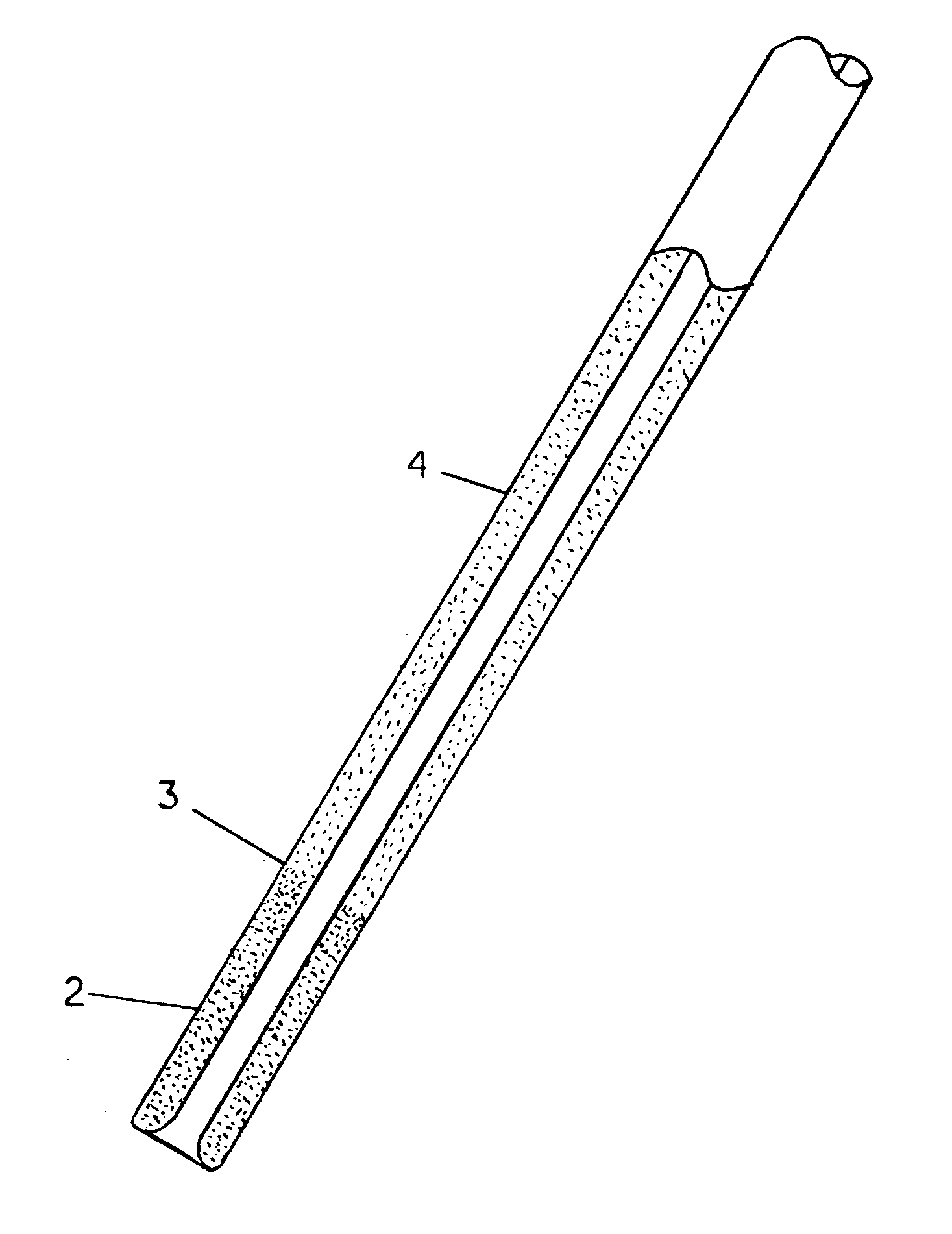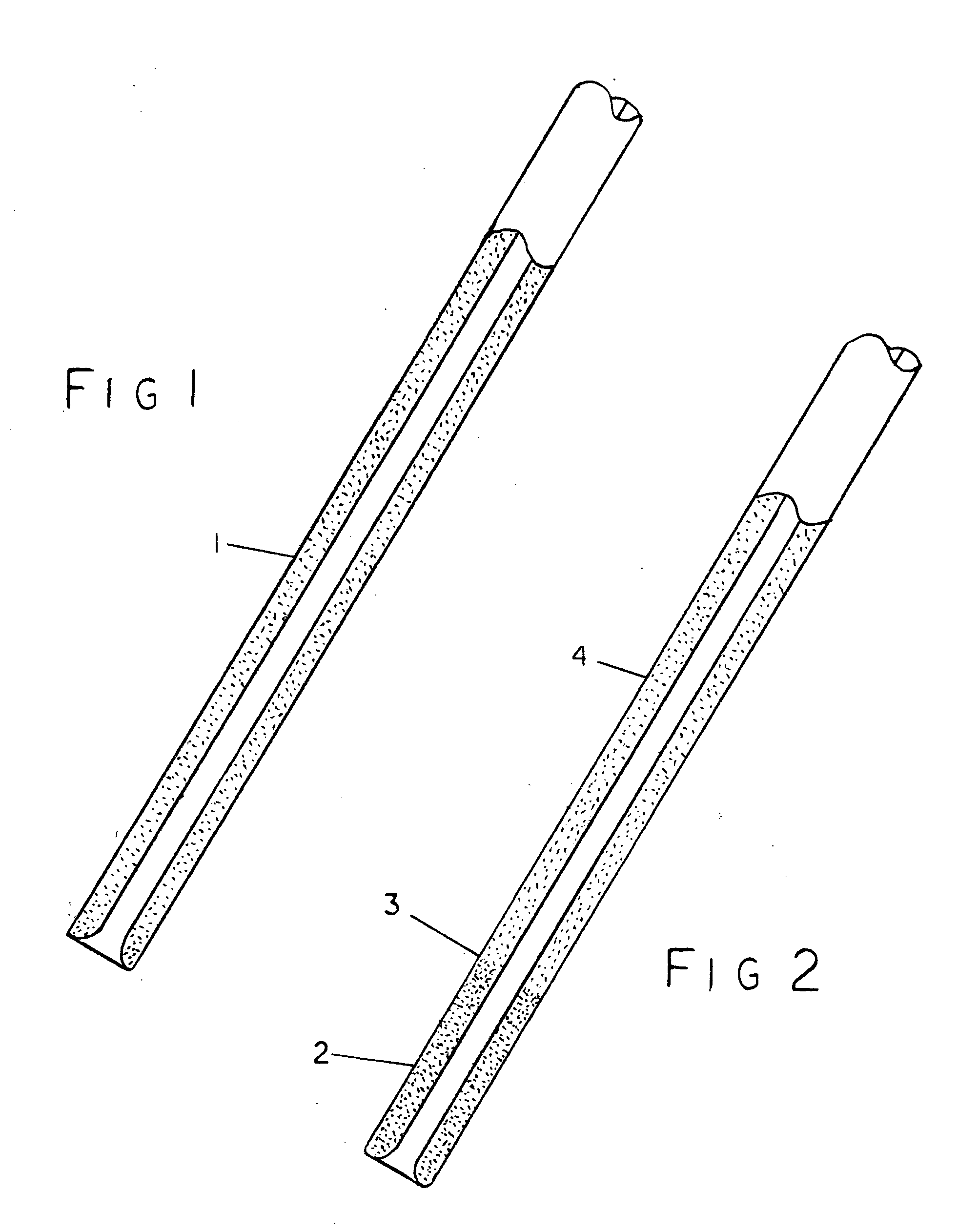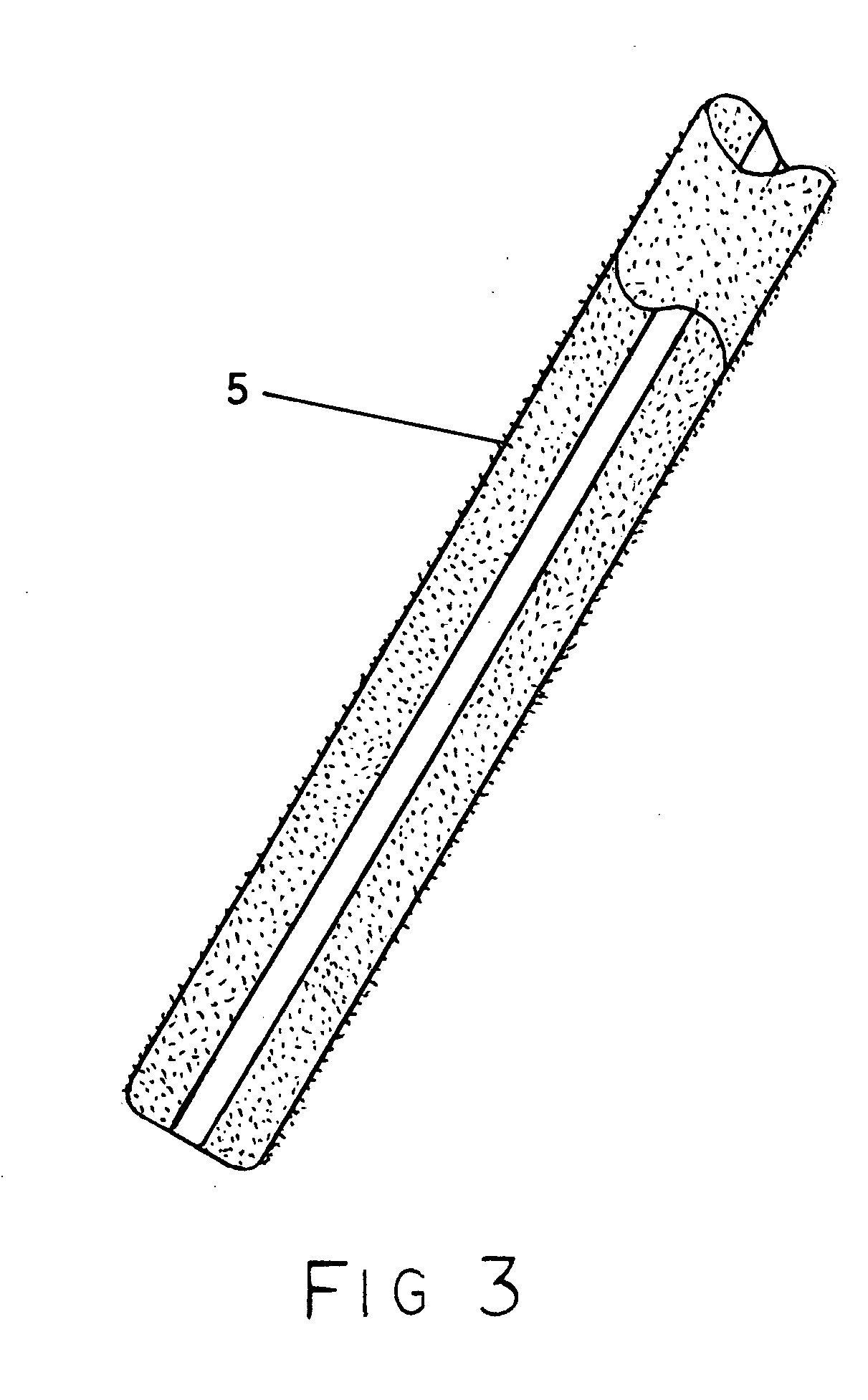Vibrating, magnetically guidable catheter with magnetic powder commingled with resin, extruded as an integral part the catheter
a technology of magnetic powder and resin, which is applied in the field of catheters, can solve the problems of entire wires vibrating, and stiffness acting adversely
- Summary
- Abstract
- Description
- Claims
- Application Information
AI Technical Summary
Benefits of technology
Problems solved by technology
Method used
Image
Examples
Embodiment Construction
[0020] The first embodiment of this invention shown in FIG. 1, numeral 1 highlights the elegant simplicity of this design over prior art showing rare-earth or (Alinco-ceramic, etc.) magnetic powder or more common metals impregnated into the resin, in the tube extrusion machine in various densities and shapes, before or as the catheter is extruded, making the powder an integral part of the catheter, not subject to separation from the catheter as is the case with magnets variously attached, after it has been extruded. This integral incorporation of magnetic powder is highly desirable over the use of separate magnets shown in other patents attached to the catheters, usually by surgical adhesive or wire in the case of magnets attached to the distal tip, because magnetic powder tends not to maintain good shape integrity. It tends to crumble and return to a powdered state, especially when subject to vibrations, as this catheter is designed to be. Rare Earth magnets, usually made of alloys...
PUM
 Login to View More
Login to View More Abstract
Description
Claims
Application Information
 Login to View More
Login to View More - R&D
- Intellectual Property
- Life Sciences
- Materials
- Tech Scout
- Unparalleled Data Quality
- Higher Quality Content
- 60% Fewer Hallucinations
Browse by: Latest US Patents, China's latest patents, Technical Efficacy Thesaurus, Application Domain, Technology Topic, Popular Technical Reports.
© 2025 PatSnap. All rights reserved.Legal|Privacy policy|Modern Slavery Act Transparency Statement|Sitemap|About US| Contact US: help@patsnap.com



